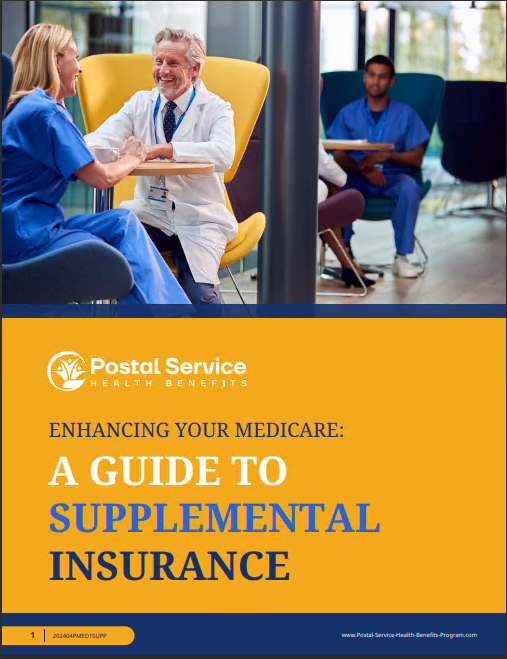Key Takeaways
-
The government’s contributions significantly reduce your healthcare costs under the Postal Service Health Benefits (PSHB) program.
-
Understanding how costs are divided between you and the government can help you make informed decisions during enrollment.
What Makes PSHB Unique?
The Postal Service Health Benefits (PSHB) program is designed specifically for USPS employees, retirees, and eligible family members. Unlike the Federal Employees Health Benefits (FEHB) program it replaced, PSHB caters exclusively to postal workers, offering tailored plans with government contributions to make healthcare more affordable. The government’s active role in subsidizing healthcare costs reflects a commitment to providing financial relief and robust options for postal workers. If you’re transitioning to PSHB, understanding how costs are divided is crucial to getting the most from your benefits and ensuring that you’re making cost-effective decisions.
This exclusivity provides flexibility and customization that the broader FEHB system couldn’t fully achieve. Tailored plans under PSHB also include benefits designed specifically for the needs of postal workers, including considerations for retirees, Medicare integration, and a focus on affordability without sacrificing quality care.
Breaking Down the Costs
1. Your Premiums and Government Contributions
The government plays a significant role in reducing your out-of-pocket healthcare expenses by covering a large portion of your premiums. As of 2025:
-
Government Share: Covers approximately 70% of the total premium cost for most plans.
-
Your Share: You’ll pay the remaining 30%, which varies depending on the type of plan you select (Self Only, Self Plus One, or Self and Family).
For example, if a plan’s total monthly premium is $500, the government would cover $350, leaving you responsible for $150. This division ensures affordable options while giving you flexibility to choose a plan that suits your needs. It’s worth noting that these percentages remain consistent regardless of your income level, providing equitable access across all eligible participants.
Government contributions also serve as a financial stabilizer, ensuring that premium increases are moderated over time. While your portion may vary based on the plan’s overall costs, the government’s share helps keep premiums manageable year after year, making long-term budgeting easier.
2. Deductibles and Coinsurance
Beyond premiums, PSHB enrollees may also face deductibles and coinsurance. Here’s what you can expect:
-
In-Network Deductibles: Range from $350 to $500 for standard plans, increasing to $1,500-$2,000 for high-deductible plans.
-
Out-of-Network Deductibles: Higher, typically between $1,000 and $3,000.
-
Coinsurance: After meeting your deductible, you’ll pay a percentage of costs for covered services:
-
In-network: 10%-30%.
-
Out-of-network: 40%-50%.
-
These costs emphasize the importance of staying in-network to minimize expenses. In-network providers not only save you money but also ensure streamlined care coordination. Check your plan’s provider directory to ensure your preferred doctors and hospitals are included, and always verify costs for procedures in advance to avoid surprises.
High-deductible plans, while featuring lower premiums, require careful consideration. For families or individuals with chronic health needs, a plan with higher premiums and lower deductibles may offer better financial security.
3. Copayments for Common Services
Copayments under PSHB vary by service type, but here’s a general breakdown:
-
Primary Care Visits: $20-$40.
-
Specialist Visits: $30-$60.
-
Urgent Care: $50-$75.
-
Emergency Room Visits: $100-$150.
These predictable fees make it easier to budget for routine care, but keep in mind that costs can add up if you frequently need specialist or emergency care. For enrollees with young families, it’s essential to consider how these copayments fit into your overall healthcare budget.
Certain plans may also offer telehealth services at reduced or no cost, which can be a convenient and cost-effective alternative for non-emergency situations. Check your plan details to explore these options, especially for routine consultations or minor ailments.
4. Medicare Integration for Retirees
If you’re a retiree enrolled in both PSHB and Medicare, you’ll enjoy even lower out-of-pocket costs. The government’s contribution to your premiums remains the same, but Medicare coordination provides additional benefits:
-
Waived or Reduced Deductibles: Many PSHB plans waive deductibles for enrollees with Medicare Part B.
-
Lower Copayments and Coinsurance: PSHB plans often reduce these costs for Medicare-eligible services.
-
Enhanced Drug Coverage: Prescription costs are minimized through automatic enrollment in a Medicare Part D Employer Group Waiver Plan (EGWP).
This integration ensures comprehensive coverage, making healthcare costs more manageable as you age. For retirees, understanding how these two programs work together can unlock significant savings. Enrolling in Medicare Part B as soon as you’re eligible avoids penalties and ensures seamless integration with PSHB benefits.
How to Maximize Savings
1. Choose the Right Plan
Selecting the right PSHB plan is critical to balancing premiums and out-of-pocket costs. During Open Season (October 15 to December 7 annually), review the following:
-
Plan Type: High-deductible plans may be suitable if you’re healthy and want lower premiums, while low-deductible plans are ideal for frequent healthcare users.
-
Provider Networks: Ensure your doctors and facilities are in-network.
-
Supplemental Benefits: Some plans offer extras like vision, dental, or wellness programs that could save you money in the long run.
Understanding your family’s healthcare usage patterns is vital. For example, if you anticipate frequent visits to specialists, a plan with higher premiums but lower specialist copayments may be more cost-effective overall.
2. Take Advantage of Preventive Care
PSHB plans often cover preventive services at no cost when you use in-network providers. This includes:
-
Annual physicals.
-
Vaccinations.
-
Screenings for conditions like diabetes or cancer.
Utilizing these services not only keeps you healthy but also helps avoid costly medical issues down the line. Preventive care is an investment in your health and can save you from significant expenses in the future.
Many plans also include wellness incentives, such as gym membership discounts or rewards for meeting specific health goals. These incentives encourage proactive health management while helping you save money.
3. Coordinate with Medicare
For retirees, integrating PSHB with Medicare can lead to substantial savings. Enroll in Medicare Part B during your Initial Enrollment Period (three months before and after your 65th birthday) to avoid late penalties and ensure seamless coordination with your PSHB plan. The government’s continued premium contribution makes this combination a cost-effective solution.
Additionally, understanding the benefits of the Medicare Part D Employer Group Waiver Plan (EGWP) can help retirees manage prescription costs effectively. This plan reduces out-of-pocket drug costs while simplifying the claims process.
What to Watch Out For
1. Out-of-Network Pitfalls
While PSHB offers flexibility, out-of-network care comes with higher costs. These services often involve:
-
Higher deductibles.
-
Greater coinsurance rates.
-
Potential balance billing if providers charge above the plan’s allowed amount.
Whenever possible, stick to in-network providers to minimize expenses. Confirming coverage before scheduling care can prevent unexpected costs, particularly for specialized services or procedures.
2. Understanding Plan Changes
Each year, PSHB plans update their benefits, premiums, and cost-sharing structures. It’s vital to:
-
Review the Annual Notice of Change (ANOC) sent before Open Season.
-
Compare your current plan to new offerings to ensure it still meets your needs.
Ignoring these updates could result in unexpected costs or inadequate coverage. Staying informed helps you adapt to changes and make decisions that protect your financial well-being.
Why the Government’s Role Matters
The government’s substantial contribution to PSHB premiums highlights its commitment to making healthcare accessible for postal workers and their families. This partnership helps keep your monthly expenses manageable while offering robust coverage options. By understanding how these costs are divided, you can make confident choices during enrollment.
Government subsidies not only reduce financial burdens but also ensure that postal workers receive comprehensive and reliable care. The shared cost model reflects the importance of health security within the USPS framework, emphasizing the value of investing in the workforce’s well-being.
Your Healthcare Choices Made Clear
Taking the time to understand the PSHB program’s cost-sharing structure can empower you to make informed decisions about your healthcare. Whether it’s choosing the right plan, coordinating with Medicare, or maximizing preventive care, knowing who pays what ensures you get the best value from your benefits. The clearer you are about your options, the better equipped you’ll be to secure your health and financial future.






